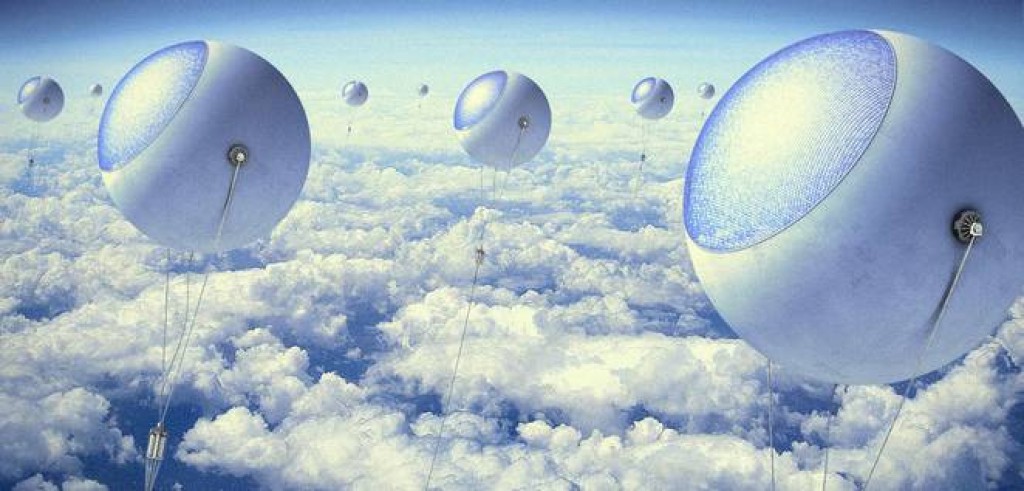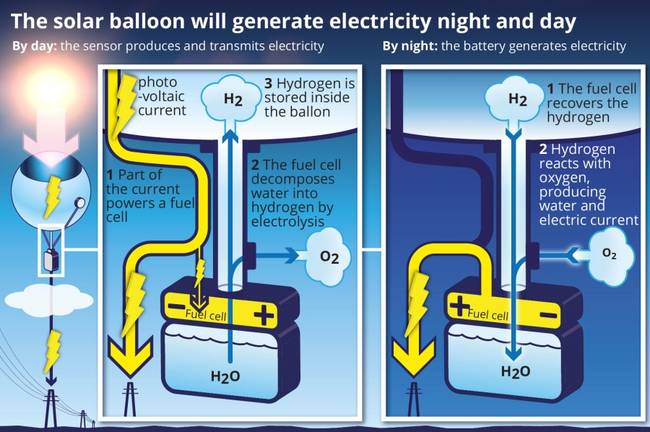RECOMMENDED VIDEOS

Simon Solar Farm at Georgia - 38.6 Mwp Solar Power Plant
Phoenix Solar Sdn Bhd

ET Solar Energy : Promelight Solar Module - Self-Cleaning…
ET Solar Energy Corp.

Giantbright : LED Lighting Fixture & LED Components
Giantbright Technology Co. Ltd.

An EPC experience with Hydrelio© Floating solar technology
Ciel Terre International

Introduction of Onyx Solar BIPV
Onyx Solar Energy S.L.
Related Stories
The largest solar farm apiary in the US opens this week
The City of London will be powered with 100% renewable energy by October 2018
New study suggests that plastic waste may be transformed into usable energy
Uravu’s zero-electricity Aqua Panels produce gallons of water from thin air
104% of Portugal’s electricity consumption in March came from renewable energy
10 Jan, 2016

High-flying solar balloons could produce clean electricity night and day
Renewable Energy & Energy Efficiency | FRANCE | 08 Jan, 2016
Published by : Ecotechtube
Combining solar photovoltaic (PV) panels, hydrogen production, and fuel cells, these solar balloons are meant to be deployed above the clouds.
A team of researchers at NextPV, a lab jointly operated by the French National Center for Scientific Research and the University of Tokyo, are working toward building a prototype of a unique solar energy solution that could overcome some of the limitations of standard ground-based PV arrays.
Solar has a lot of potential for being a major part of our renewable energy future, from large utility-scale power plants to residential rooftop solar arrays, but standard solar PV systems have a couple of weak points that keep them from being more widely adopted. Aside from the relatively high initial cost of a solar PV array (which has been rapidly dropping but is still out of reach for many people), two other related issues continue to challenge the industry as a whole, namely the need for energy storage for nighttime, and the effects of cloudy or inclement weather on solar electricity production.
The solar balloon concept being developed at NextPV could be one potential solution for both of those issues, as the system combines direct solar electricity production during the day with the production of hydrogen, which serves as an energy storage medium for producing electricity in a fuel cell, long after the sun goes down. The
researchers claim that solar yields from a system of solar panels deployed above the clouds (6 km or 3.7 miles above the ground) could be "multiplied" (when compared with ground-based solar systems) by being free of the effects of cloud cover, and could eventually produce three times as much electricity, when compared on a square-foot basis.
"The main problem with photovoltaic energy is that sunlight can be obscured by clouds, which makes electrical production intermittent and uncertain. But above the cloud cover, the sun shines all day, every day. Anywhere above the planet, there are very few clouds at an altitude of 6 km—and none at all at 20 km. At those heights, the light comes directly from the Sun, as there are no shadows and hardly any diffusion by the atmosphere. As the sky loses its blue color, direct illumination becomes more intense: the concentration of solar energy results in more effective conversion, and hence higher yields." - Jean-François Guillemoles, CNRSHere's the gist of the system:

© PixScience.fr/ Grégoire Cirade
According to Guillemoles, CNRS senior researcher and the French director of NextPV, using hydrogen as "an energy vector" in this way could provide an "elegant solution" for intermittency of renewables, as it can be obtained through electrolysis with "excess" solar electricity during the day, and then recombined with oxygen in a fuel cell to generate electricity during the night (producing only water as a byproduct). The hydrogen could also be used to inflate the balloons and keep them aloft without external energy inputs, making the system potentially more efficient.
The solar balloon is still a concept at this point, but NextPV plans to produce a working prototype in the next two years, at which point a whole other set of challenges will likely surface, such as the issue of needing extremely long tethers and cables connecting the balloons with the ground, and trying to compete with standard PV prices, which continue to drop year after year.
Article taken from : inhabitat.com
by : Derek Markham
by : Derek Markham
